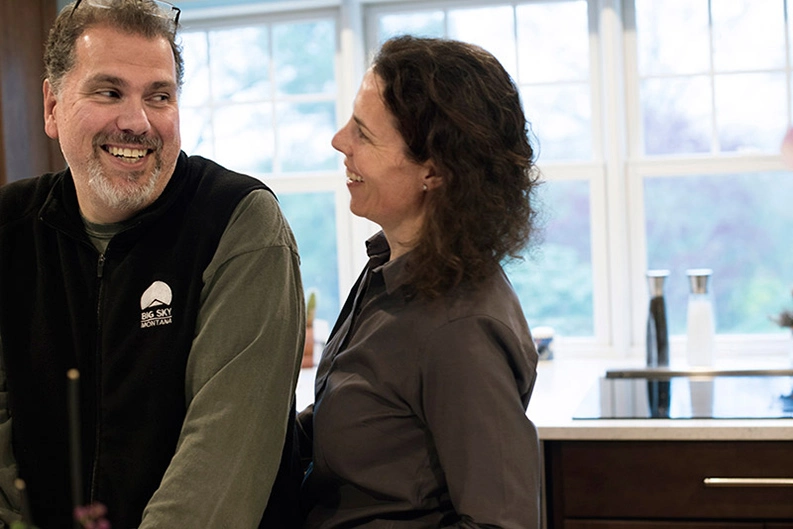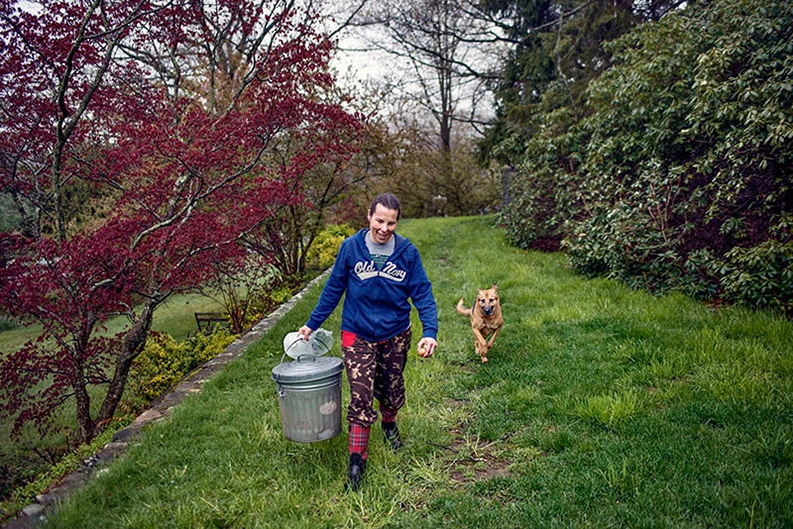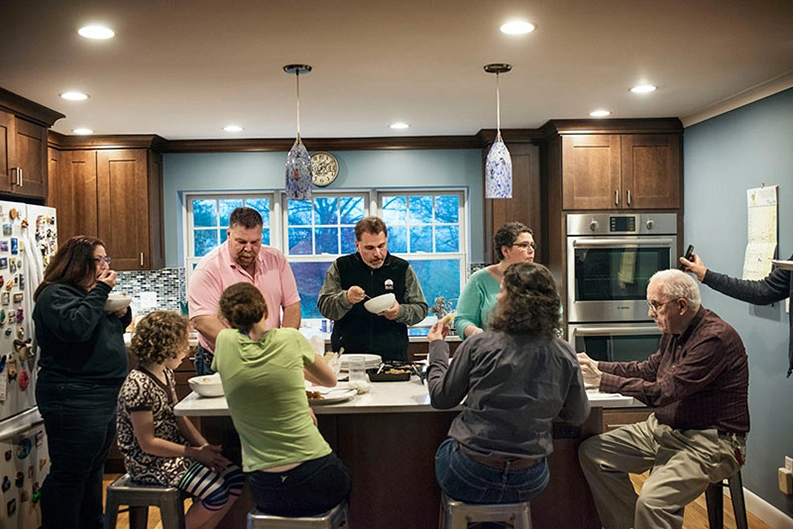Early in her research career, Jennifer Allport-Anderson lived human dramas on two vastly different scales. One was at home, with her husband and growing family, the other in the lab, where she studied the biology and behavior of our cells. At first, these two worlds didn’t appear to have much in common.
The cellular world, in many ways, provided more surprises. Jennifer, a cell biologist who now leads a heart failure and in vivo pharmacology team at the Novartis Institutes for BioMedical Research (NIBR) in Cambridge, Mass., still describes cells almost like people acting in sweeping dramas.
“I tend to anthropomorphize,” she says. “I love to think of cells going about their business.”

Some of these cells are renegades or invaders. Some are patrollers, looking for signs of trouble. All of these cells send signals back and forth, but like humans, they fall victim to glitches and misreadings. The consequences can be dire for human health. The challenge for Jennifer and her team is to devise molecules that tweak chemical communication and coax the cells’ behavior back into line.
In the mid-90s, as a post-doctoral researcher at Brigham and Women’s Hospital in Boston, Jennifer began to focus on the endothelium, a layer of cells that lines the entire vascular system, from the heart to the tiniest capillary. These cells wield enormous influence. They open and close access for visitors. They sense changes in blood volume and send signals to widen or narrow passages. And they detect and repair damage to nearby tissue.
When these cells get things wrong, havoc often follows. If endothelial cells misread cues, for example, they can invite attacks on healthy tissue. This can lead to inflammation, perhaps triggering arthritis or the buildup of plaque within the arteries. The study of these cells, their signaling, their quirks and misbehavior fascinated Jennifer and led her to research the causes of heart disease.

Life invades the lab
That was when her two worlds, family and cellular, began to merge. It started in 2003 when her husband, Keith, accompanied his brother, Scott, to an auto race. Keith noticed that Scott was walking slowly and struggling to climb stairs. A few days later, Jennifer was dressing their 18-month-old daughter, Elsa, when her sister-in-law called. Scott had suffered “a little heart attack,” and was in the hospital.
“We went to the hospital,” Jennifer recalls, “and found that he’d had a massive heart attack.”
Surgeons were going to put in three stents to help open clogged arteries. Fortunately Scott, only 44 at the time, was what Jennifer calls “a moose of a man.” He worked outdoors as an arborist, and his heart was big and strong enough to regain much of its function.
Scott’s heart attack made it crystal clear to Jennifer that the cellular dramas she studied at work might be highly relevant to her own family. She took stock. Scott, Keith and their sister, Laura, were overweight. Their mother, Leah, had been diabetic for 35 years.
“That makes things ten times worse for heart disease,” Jennifer says.

She now felt a strong desire to push toward research that could make a difference, not only for her family, but for millions of others like them. After all, despite dramatic progress in the last half century, including the development of cholesterol-fighting statins and blood-pressure medication, cardiovascular disease remains the number one killer worldwide.
“I wanted to do more purpose-driven science,” Jennifer says.
In 2004 she joined NIBR to help discover new medicines for diseases such as heart failure.
Meanwhile, health struggles in her family only got worse. One day, her mother-in-law’s anti-arrhythmic drugs stopped working. Her heart fluttered. And when doctors threaded a catheter from her thigh to her heart they punctured an artery. That crisis took months to abate. Others, sadly, would follow, including falls, pneumonia, and a wrenching move to a nursing home. She would die suddenly at age 77. It was probably arrhythmia or a stroke, Jennifer says.

In 2005, Jennifer’s husband, Keith, was diagnosed with hypertension and prediabetes. This led to big changes in the household. Jennifer and Keith both wanted to maximize the chances that their two daughters would grow up healthy, and with healthy parents. Keith went on a serious diet and Jennifer, who herself was overweight, began to focus on healthy, home-cooked family meals. She also started running. Within a couple of years, Keith had lost 125 pounds, and Jennifer was running marathons. (She has run five of them to date.)

Jennifer’s two worlds each offered their own response to cardiovascular disease. At home, it was exercise and diet. At work, it was carrying out early research for new treatments.
Heart failure is a complex disease, and the underlying cause can vary from individual to individual. Scientists—including Jennifer and her team—are working to uncover the cellular mechanisms behind the disease and identify new strategies for treatment. Jennifer’s group is particularly interested in exploring cell signaling pathways that drive heart failure to find ways to intervene.

For Jennifer, the urgent need for new treatment options was reinforced again in 2012, when Scott was hospitalized with heart failure. His heart was pumping blood at only 15% of capacity. Doctors frantically struggled to get his blood pressure down. They eventually succeeded.
More than three years later, Scott arrived at a party at the Allport-Anderson home in suburban Boston, where family members were gathered to watch the Kentucky Derby horse race on TV and eat dinner. Looking at it from Jennifer’s perspective, the room might as well have been a laboratory for coronary health.
The people clustered around the TV were engaged in the struggle, each in their own way. Scott smiled and socialized, but moved slowly. He can no longer work due to his heart problems, Jennifer says. Keith, who regained some of his lost weight, was recently diagnosed with diabetes.

Jennifer and her two daughters, meanwhile, are the family’s most active members. That very morning, Jennifer ran a half marathon. And her two daughters are both competitive swimmers. Ten-year-old Corinne is in near constant motion and at one point did a few push-ups in front of the TV, clapping her hands between each one.
The following Monday, after a busy weekend with family, Jennifer returned to her other world and resumed her pursuit of new ways to treat heart disease.
Family history drives this scientist’s work in #heartfailure
